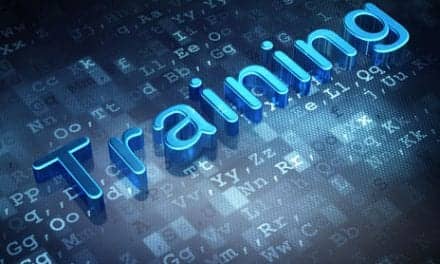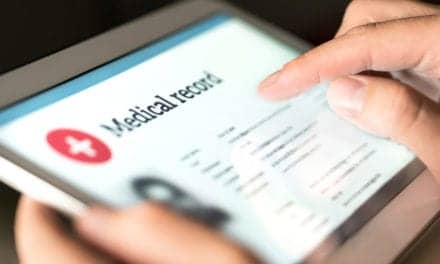
The motusONE app transmits time-synced biomechanical data in real time via Bluetooth. This connection between the variables of body performance and movement analysis can improve how therapists treat, release, and monitor a patient after discharge.
By Jason LaMendola, PT
The current buzzword of “workplace safety” has been around for a long time within the physical therapy profession, but with increasing consciousness of costs, public anxiety about medical costs, and an increased focus on functional movement across all sports and professions. The profession is at an interesting crossroads. Movement screens are rising in popularity, but some clinicians may have reservations about their effectiveness and accuracy. To resolve that, technologies are emerging that are designed to help make these ultimately subjective tools more accurate and useful.
Mike Reinold, PT, DPT, SCS, CSCS, of Champion Physical Therapy, Boston, is a physical therapist who trained under sports surgeon James Andrews, MD, an orthopedic surgeon who has treated professional athletes from around the world, and was formerly an athletic trainer for the Boston Red Sox. Reinold has worked at the forefront of the profession for more than a decade, and has long advocated movement screens, and says he believes they are more than a fad. He points out, however, that there may be questions associated with these tools.
Rehab by the Numbers
“It’s not one size fits all,” Reinold says. “Even in an athletic population, a movement that is normal for one body part is going to be disadvantageous for another part. There is clearly going to have to be an expert analysis of the results and even the movement itself, but this creates a problem of subjectivity where one therapist/observer may have different readings.”
In most screens, there is an artificial and unusual system of movements. For example, a typical free squat with hands overhead is a useful screening exercise that is easily assessed, but it is not a movement that most people perform as daily activity. In fact, most injuries come in unusual combinations of motions that result in an overload, often compounded by poor biomechanics, poor physical condition, and fatigue. The technology such as Ergo Senz, DAQRI Smart Helmet, and other monitoring of the workers on-site is important, since accidents do happen. Even workers who passed the safety screens can have something happen, so making sure good data and baseline levels are there for everyone is a real key.
Reinold agrees with this tenet. “We try to simplify things at Champion. We want the client to be able to perform the basic foundational movement patterns of hinge, squat, step, lunge, rotate, push, and pull. We look at both the quantity and the quality of movement.” Even with Reinold’s expertise and experience, however, there is a possibility of subjective error creeping in over days or even years of monitoring.
This issue would be reduced by the use of tools that create an objective measure and are used during the screens and other activities, including corrective exercises and monitoring the actual workplace.
[sidebar float=”right” width=”250″]Product Resources
The following companies offer products and services that can be helpful for industrial rehabilitation and work injury assessment:
DSI Work Solutions Inc
www.dsiworksolutions.com
ErgoScience
www.ergoscience.com
JTECH Medical
www.jtechmedical.com
OPTP
www.optp.com
Spirit Medical Systems Group
www.spiritmedicalsystems.com/
welcome.html
Stretchwell
www.stretchwell.com
WorkWell Prevention & Care
www.workwell.com[/sidebar]
Technology Tells It Like It Is
With current therapy tools this is seldom practical and, in most cases, outright impossible. Today, a worker in a busy warehouse cannot have a physical therapist safely following him or her around and monitoring movements without an investment of significant time and money. Transforming that possibility into a practical option, however, is closer than one may think.
Developers at several companies are working on ways to focus these movement screens into objective and even recordable data. For example, Fusionetics, Milton, Ga, manufactures a movement screen used by several professional teams as well as large medical providers. It uses a standardized system of movements that aim to assess function while reducing the subjectivity of results. Another source, Motus Global, New York City, is taking it a step further by using small wearable sensors to record the data and provide objective information about body position and forces. The motusONE system illuminates what the body is doing during the activity and provides serviceable data regarding motion, angles, and endurance. Since it is a wearable technology, it can give calculations across multiple joints simultaneously.
Emerging technologies are being engineered with the potential to capture what happens in a real world setting in real time. The feedback the devices can provide stand to substantially alter how deficits are analyzed as well as prescriptions for remedy and recovery. They may also enhance patient education and empower the patient with data for continuous self-monitoring. Likewise, sensors could be embedded in clothing that would allow workers or athletes to go through a guided, personalized warm-up. Those sensors could also help identify danger in the workplace, such as incorrect mechanics for lifting a heavy package, or fatigue setting in at the end of the day, when many workplace accidents occur. For therapists, these kinds of systems could extend their practice outside the office setting, and provide data from a patient’s normal day that would allow assigning “homework” to rehabbing patients. Results for compliance and effectiveness could be monitored on a smartphone.
Data-Driven Return to Work
The bottom line is that therapists have techniques for rehabbing a person, but assessment of results consists only of observing whether the body can perform the task, not what the body is doing that enables it to perform the task. Without that information, the analysis is incomplete. That deficiency gap is being bridged by technology that evaluates multiple factors and delivers related data in real time, offering the therapist an opportunity to make decisions based on that data. PTP
Jason LaMendola, PT, owns T.L.C. Physical Therapy, with five offices in the New York Metropolitan area and New Jersey. LaMendola received a bachelor of science in physical therapy in 1998 from Qunnipiac College. He has been in practice for 17 years, specializing in outpatient orthopedics. For more information, contact [email protected].





